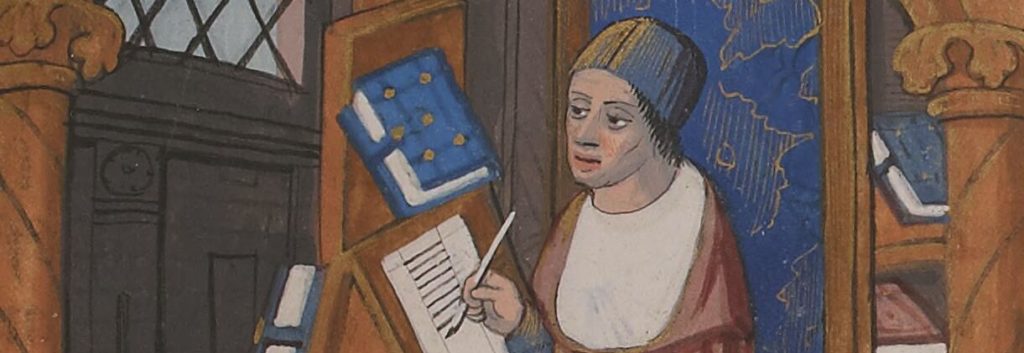L’Arbre des Batailles (The Tree of Battles circa 1386-9 A.D.) was presented to King Charles VI as an unofficial treaty on chivalry and the laws of war, posing as one author’s cry for societal reform. In the late 19th century, research in medieval international law rediscovered the manuscript. Today, there are approximately one hundred surviving copies of the manuscript divided into two versions: version longue (or version interpolée) and version brève (or version commune). The interpolée version contains adjustments to the grouping of the judicial content within the book’s four primary divisions, with additional content added to the section dedicated to recounting the history of European kingdoms and the popes. On the other hand, the commune version is shorter and more widely read, with several printed editions made between 1480 and 1515 A.D.
With around eighty-two manuscripts in the public domain with French text, eight held in private collections, and close to eleven to thirteen manuscripts containing complete or partial translations into Castilian, Catalan, Occitan, and Scottish from the 15th century, this unofficial military treatise would become the most significant surviving artifact of Honorat Bovet’s life. It is also an exemplary representation of cultural fluidity and persistence of arborescence in the medieval landscape, given the allegory of a “Tree of Battles” and the recurring representation of a “Tree of Suffering”. Currently, the only modern English version of L’Arbre des Batailles was written in 1949 by G.W. Coopland, based on the text published in 1883 by Ernest Nys in L’Arbre des Batailles d’Honoré Bonet, which includes references to the “Seillière MS” manuscript.
-Ernest Nys 1883

Author: Honorat Bovet (ca. 1340-1410 A.D.)
The manuscript’s author, Honorat Bovet, was a professionally diverse character from northern Provence during an era of incredible socioeconomic conflict. Bovet’s career began, speculatively, with his education at the Priory of Notre-Dame de Bayons. In the 1360s, he became a monk at the Abbey of Saint-Martin de l’Ile-Barbe, followed by a long academic career in Montpellier, Avignon, and Paris. During this time, he began creating his manuscript, L’Arbre des Batailles, coinciding with Louis II of Anjou’s encroachment on Provençal territories and the ninth year of what became known as the “Great Schism” (Le Grand Schisme d’Occident) of the Catholic Church. The dedication of this manuscript to the French king granted him access to affluent circles and launched his political career as a diplomat to Charles VI, where he continued to advocate for the end of the Great Schism and the continuous election of two opposing popes.

How his three professions tie into the manuscript
Bovet was a man of the cloth, a diplomat to the king, and a member of the university community. Because of these three primary professional paths, Bovet was subjected to a history of arborescence and arboreal iconography that saturated the interconnected realms of religion, governmental structures, and knowledge networks, that both facilitated the creation of L’Arbre des Batailles and perpetuated the bond between trees and ‘higher meaning’.
